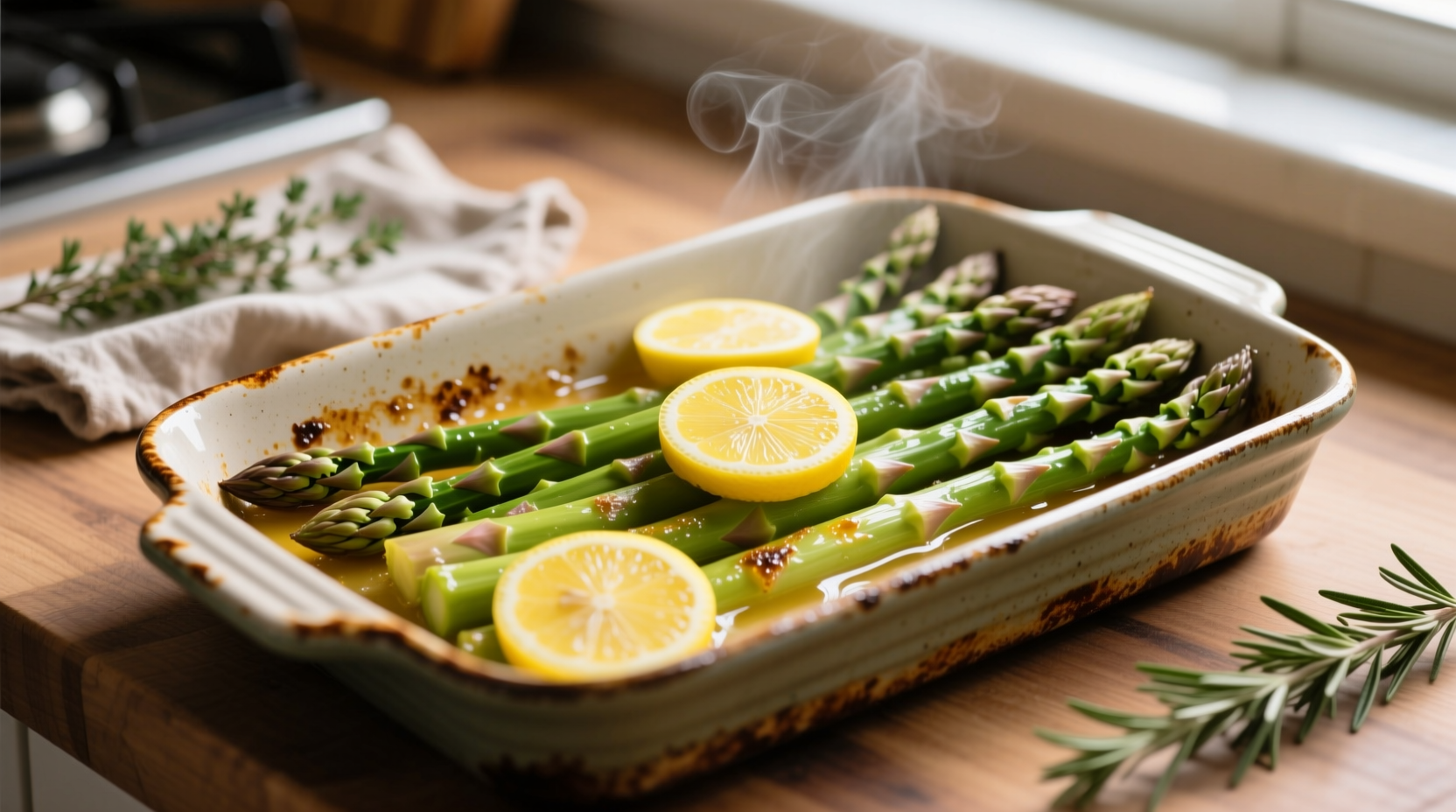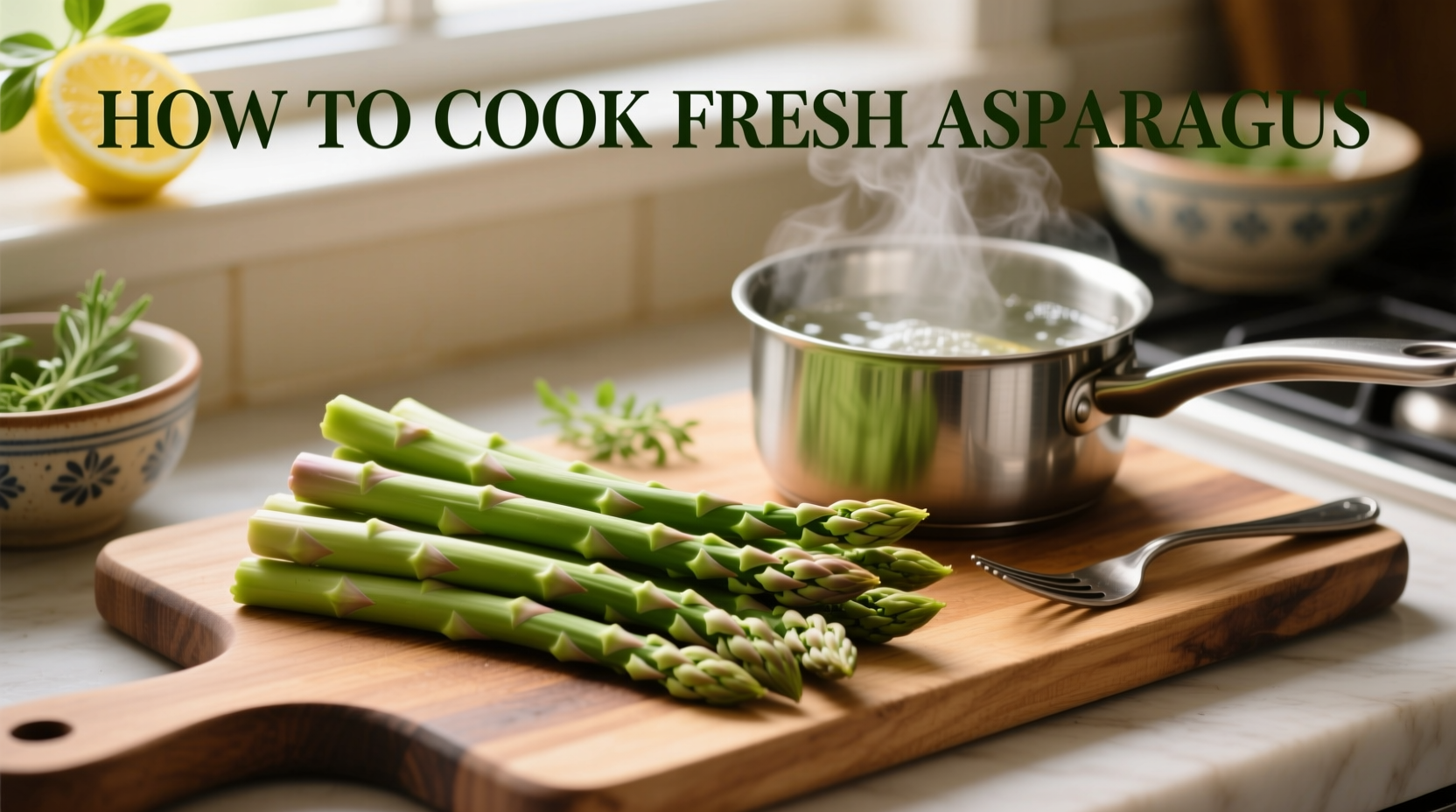The fastest way to cook fresh asparagus is by roasting: trim the woody ends, toss with olive oil, salt, and pepper, then roast at 400°F (200°C) for 12-15 minutes until tender-crisp. For perfectly cooked asparagus every time, follow these professional techniques for roasting, grilling, steaming, and sautéing that preserve flavor and nutrients while achieving ideal texture.
Nothing says spring quite like a plate of perfectly cooked asparagus. Yet many home cooks struggle with this elegant vegetable, ending up with either rubbery stalks or mushy disappointment. The secret lies not in complicated techniques, but in understanding asparagus' unique structure and applying the right method for your specific spears. Whether you've just picked up vibrant green stalks at the farmers market or found a great deal at the grocery store, this guide delivers restaurant-quality results with simple home kitchen tools.
Choosing and Storing Fresh Asparagus
Before you even think about cooking, selecting quality asparagus makes all the difference. Look for firm, straight spears with tightly closed tips—no flaring or开花 (flowering). The cut ends should appear moist, not dried out. Thicker spears (pencil-width or larger) work best for roasting and grilling, while thinner varieties excel with steaming or quick sautéing.
Store asparagus upright in a glass with an inch of water, like flowers, and cover loosely with a plastic bag. Properly stored, fresh asparagus maintains peak quality for 3-5 days. Avoid washing until ready to cook, as excess moisture accelerates spoilage.
Preparation: The Critical First Step
Improper trimming ruins more asparagus than any cooking mistake. Instead of blindly cutting a set length from the bottom, use this professional technique:
- Hold one spear near the middle and bend until it snaps naturally
- Use this break point as your guide for the remaining spears
- Line up all spears and trim with a knife at the same spot
This method ensures you remove only the truly woody portion while preserving maximum edible length. For thicker spears over ¾ inch in diameter, consider peeling the lower third with a vegetable peeler to eliminate any remaining fibrous texture.
| Cooking Method | Prep Needed | Best Spear Thickness | Optimal Cooking Time |
|---|---|---|---|
| Roasting | Trim ends, optional peel | Medium to thick | 12-18 minutes |
| Grilling | Trim ends, oil well | Medium | 8-12 minutes |
| Steaming | Trim ends | Thin to medium | 4-7 minutes |
| Sautéing | Trim ends, optional peel | Thin to medium | 5-8 minutes |
Four Foolproof Cooking Methods
1. Perfect Roasted Asparagus (Best for Weeknight Dinners)
This hands-off method delivers maximum flavor with minimal effort. Preheat oven to 400°F (200°C). On a rimmed baking sheet, toss trimmed asparagus with 1-2 tablespoons olive oil, 1 minced garlic clove, salt, and freshly ground black pepper. Arrange in a single layer without crowding.
Raise your asparagus game by adding lemon zest during the last 3 minutes of cooking. For thicker spears, flip halfway through cooking. Remove when spears bend slightly when lifted with tongs but still offer resistance. Overcooking transforms crisp-tender spears into limp disappointment within seconds, so check early.
2. Restaurant-Style Grilled Asparagus (Ideal for Entertaining)
Fire up your grill to medium-high heat (about 375°F/190°C). Toss trimmed asparagus with olive oil, ensuring each spear is lightly coated. Place spears perpendicular to grill grates to prevent falling through. Cook 8-12 minutes, turning occasionally, until tender with attractive grill marks.
Pro tip: Thread thinner spears onto skewers for easier handling. For added flavor complexity, finish with a drizzle of balsamic reduction or a sprinkle of flaky sea salt immediately after removing from heat.
3. Crisp-Tender Steamed Asparagus (Nutrient-Preserving Method)
Fill a pot with 1 inch of water and bring to a simmer. Place trimmed asparagus in a steamer basket, cover, and steam 4-7 minutes depending on thickness. The ideal texture: bright green color with slight resistance when pierced by a fork.
According to USDA nutritional data, steaming preserves up to 90% of asparagus' vitamin C content compared to 60-70% with boiling. For enhanced flavor, add lemon slices or herbs to the steaming water.
4. Quick Sautéed Asparagus (Perfect for Thin Spears)
Heat 1 tablespoon olive oil in a large skillet over medium-high heat. Add trimmed asparagus and 2 tablespoons water. Cover and cook 3 minutes, then uncover and continue cooking 2-4 minutes until water evaporates and asparagus develops light caramelization.
Finish with a squeeze of fresh lemon juice and optional toppings like shaved parmesan or toasted almonds. This method works particularly well with pencil-thin asparagus that would overcook in the oven.
Flavor Enhancements That Transform Asparagus
While fresh asparagus shines with minimal seasoning, these professional pairing suggestions elevate it from side dish to star:
- Lemon and garlic - The classic combination that cuts through asparagus' natural bitterness
- Hollandaise sauce - Traditional with brunch, but try a lighter version with Greek yogurt
- Toasted almonds or pine nuts - Adds crunch that contrasts beautifully with tender spears
- Balsamic glaze - Creates sweet-tart complexity without overpowering
- Shaved hard cheeses - Parmesan, pecorino, or manchego add umami depth
For vegan preparations, nutritional yeast provides cheesy flavor without dairy. Always add acidic elements like lemon or vinegar after cooking to preserve brightness.

Avoiding Common Asparagus Mistakes
Even experienced cooks make these asparagus errors:
- Overcrowding the pan - Causes steaming instead of proper browning
- Adding salt too early - Draw out moisture and prevent proper caramelization
- Using low-quality oil - Asparagus absorbs flavors readily, so choose good extra virgin olive oil
- Peeling entire spears - Only necessary for very thick stalks; removes valuable nutrients
- Underseasoning - Asparagus needs more salt than you might expect
Food safety note: Never leave cooked asparagus at room temperature longer than 2 hours. Refrigerate leftovers promptly in an airtight container for up to 3 days. Reheat gently to preserve texture—microwaving often makes asparagus rubbery.
Serving Suggestions for Any Occasion
Asparagus transitions seamlessly from casual to elegant presentations:
- Weeknight dinner - Toss roasted asparagus with pasta and lemon zest
- Brunch centerpiece - Arrange steamed spears on toast with soft-boiled eggs
- Dinner party showstopper - Wrap thicker spears in prosciutto before roasting
- Salad upgrade - Chill cooked spears and add to grain salads
Pair asparagus with proteins that complement rather than compete: grilled chicken, seared salmon, or roasted lamb. For vegetarian options, consider adding white beans or quinoa for complete protein.
How do you know when asparagus is cooked properly?
Perfectly cooked asparagus should be bright green with slight resistance when pierced by a fork (tender-crisp). It should bend slightly when lifted but not droop. Overcooked asparagus turns olive green and offers no resistance. Cooking time varies by method: roasting takes 12-18 minutes, steaming 4-7 minutes, and grilling 8-12 minutes depending on thickness.
Should you peel asparagus before cooking?
Peeling is only necessary for thicker asparagus spears (over ¾ inch in diameter). To check, gently press the lower third of a spear between your fingers - if it feels tough or fibrous, peel from the bottom third upward using a vegetable peeler. Thin spears typically don't require peeling as their skin is tender enough to eat.
What's the healthiest way to cook asparagus?
Steaming preserves the highest nutrient content, particularly water-soluble vitamins like vitamin C and folate. According to USDA research, steaming retains up to 90% of asparagus' vitamin C compared to 60-70% with boiling. Quick sautéing with minimal oil also preserves nutrients while adding healthy fats that enhance absorption of fat-soluble vitamins.
Can you eat asparagus raw?
Yes, thin asparagus spears can be eaten raw in salads or as crudités. Peel thicker spears first, then slice thinly on a diagonal. Raw asparagus has a grassier flavor and more fibrous texture than cooked. For better digestibility, massage thicker raw spears with a small amount of olive oil and lemon juice to break down fibers before serving.











 浙公网安备
33010002000092号
浙公网安备
33010002000092号 浙B2-20120091-4
浙B2-20120091-4